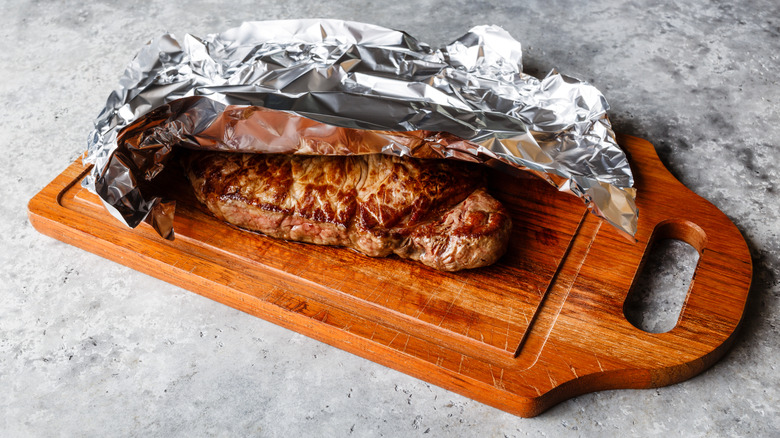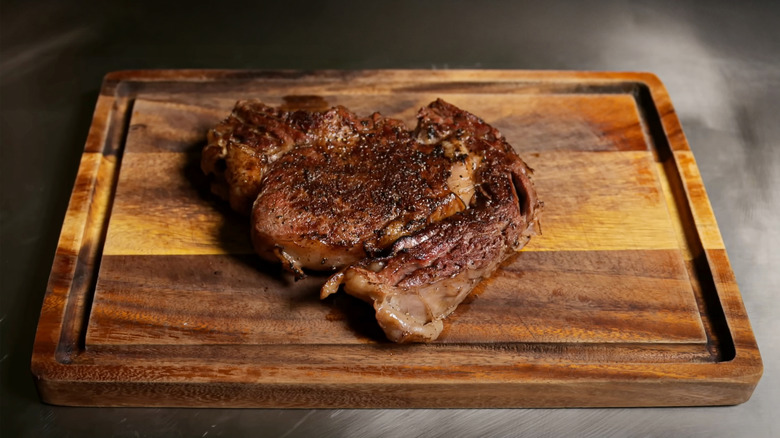The Aluminum Foil Mistake That's Ruining The Crust On Your Steak
Of the many big mistakes that you might be making with steak, one of the biggest concerns resting, and specifically, when to just let your steak be. It's a reasonable instinct to wrap your precious steak in aluminum foil as it rests, with the intention of keeping it warm. But that last touch could be the end-all for your steak, taking it from the perfect medium rare to a chewy well-done cut. The thought process is correct — aluminum foil will keep the steak nice and toasty by locking in heat. However, all that's doing is creating a mini-oven that continues cooking the steak as it sits, which is the complete opposite goal of resting. There are a lot of clever hacks for aluminum foil around the kitchen, but this isn't one of them.
That practice does much more harm than good, and chef and restaurateur Andrew Carmellini wholeheartedly agrees. We spoke to Carmellini at NYC Wine & Food Festival in the Seaport and he told us, "Whoever told you tinfoil should be immediately removed from the cooking world," Carmellini says with a laugh. "Because all you're going to do is trap heat inside the steak. It's going to overcook. It's going to create moisture." Carmellini is the right person to trust with all things steak, and he believes that the perfect crust begins in the fridge rather than the pan.
The right way to maintain a steak's crust
Carmellini points out that not all cuts of steak call for a crust, like Wagyu, which warrants a different approach on the grill. "Now, USDA prime American steaks ... we want that crust because we want that texture, that grilled flavor." He recommends getting started the day before, and leaving the steaks unwrapped in the fridge to draw out as much moisture as possible. "Do it 12 hours on one side, flip it over, 12 hours [on] the other side, so the steak's already a little dry," he shares. This fridge drying process helps speed up dehydration, allowing the steak to brown as soon as it hits the hot pan.
However, Carmellini also warns, "If you get a steak out of a plastic wrap and just start to cook it, it's never going to get a great crust." Moisture trapped by packaging leads to steaming the surface rather than searing it, sabotaging any chance of the delicious char and taste created by the Maillard reaction. The same principle applies once it's off the heat; draping foil over the steak only reintroduces the moisture you worked so hard to remove.
Instead, Carmellini recommends simply letting your steak rest uncovered. "You can put it on a plate; it doesn't even have to be a resting rack," he says. The rack simply helps with circulation, draining any leftover water out of the steak, but resting is just about letting the protein strands relax. "That traps the moisture inside the protein strands. That's what you want," emphasizes Carmellini.

